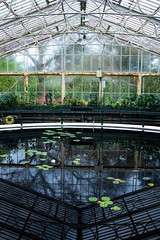I had never heard of Goalball until I tried to apply for tickets for the Paralympic Games. The ticket I eventually got was a day pass at the Olympic Park, which included Goalball.
Goalball is a team sport designed specifically for blind athletes, originally devised in 1946 by the Austrian Hans Lorenzen and German Sepp Reindle as a means of assisting the rehabilitation of visually impaired veterans from World War 2..
Goalball gradually evolved into a competitive game during the 1950s and 1960s, and finally becoming a Paralympic sport in 1980.
The basic rules for Goalball are as follows:
“Participants compete in teams of three, and try to throw a ball that has bells embedded in it into the opponents’ goal. Teams alternate throwing or rolling the ball from one end of the playing area to the other, and players remain in the area of their own goal in both defence and attack. Players must use the sound of the bell to judge the position and movement of the ball. Games consist of two 12-minute halves (formerly 10-minute halves). Eyeshades allow partially sighted players to compete on an equal footing with blind players.Eyepatches may be worn under eyeshades to ensure complete coverage of the eye, and prevent any vision should the eyeshades become dislodged.”
At the London 2012 games, Goalball was taking place at the Copper Box. In the Olympics, this was the “Box that Rocked”, but for Goalball it had a very different atmosphere. While in play, us spectators had to be very quite. This was achieved, believe it or not, with the help of Bjork, as they played “It’s So Quiet” over the sound system.
Our tickets allowed us to see two games. Sweden against Finland, and Team GB against Brazil.
There was plenty of support for Sweden in the first game, with one lady being very vocal in the breaks between the action.

It was quite interesting to watch, and even though they asked for silence from the crowd watching the game, this silence was not required of the competitors, who stomped around the court, to try and disguise where the ball was. Here are some pictures from the first game:
Team Sweden:

Team Finland:

This illustrates how the rules regarding eyepatches and shades is administered:

Team Sweden defending:

This game ended in a 4-1 win for Finland, who went on to win the Gold Medal.
Our second game was Brazil against Team GB. The noise in the Copper Box got very loud in anticipation of the appearance of the home team. When they appeared, the noise was deafening:

Here are a couple of members of the British Team:
Adam Knott:

Simon Goodall:

For Team GB, the game was a little disappointing, as Brazil, who went on to win the Silver Medal, ran out 7-1 winners. However, I got the real impression, that we were witnessing, the original ideals of the Olympic Games, it was the taking part and not the winning. Despite losing by such a big margin, the Team GB players seemed pleased to have been there, and were lapping up the applause they were receiving from the home crowd.

Finally, not the best of pictures – but it captures a moment. Team GB were taking a lap of honour, when the girl sitting next to me, started calling out one of the players names. Despite the noise, he heard her, and came running over to her, This was really was a magical moment:

I am so pleased I had the opportunity to see this sport. I found the whole event quite emotional, and great fun.























